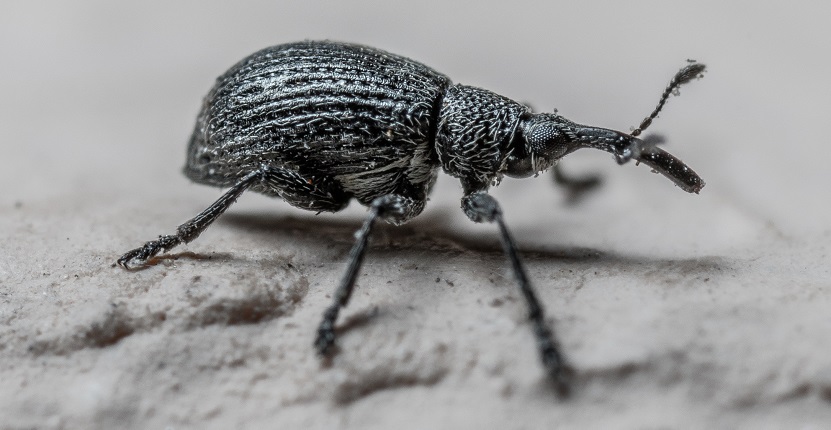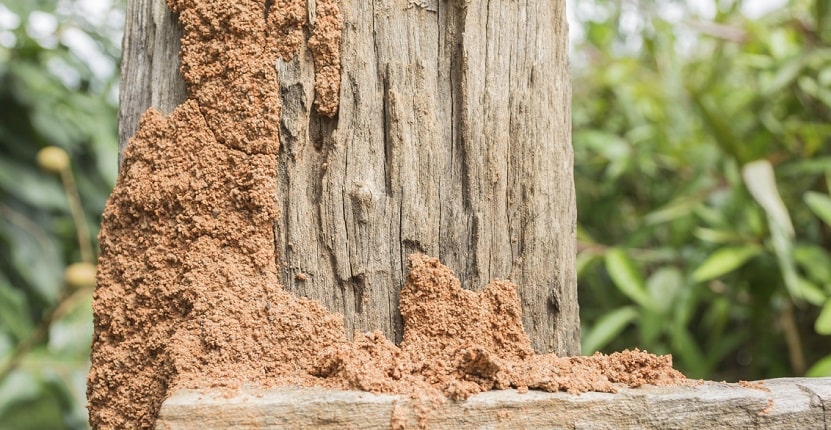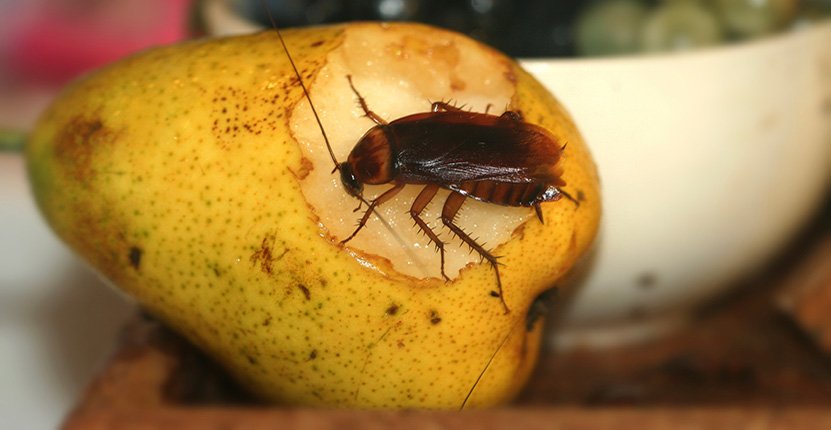Insects of the orders Hymenoptera (wasps, bees and ants) and Isoptera (termites) have elaborate social systems and build elaborate nests. Though these insects are among nature’s wonder workers, they are also significant (if unintended) pests in many Melbourne homes, and will attack if they feel provoked.
Wasps, bees, ants and termites like warm and dry places to build their nests; like tree hollows, underground chambers or high up in trees away from predators. However, high-rises and suburban homes suit these insects equally well.
Wasps and bees are highly defensive of their hives, so someone coming upon one accidentally can be at quite the risk of being attacked by a swarm.
Here We Describe the Most Common Types of Colonies and How to Carry out Safe Nest Removal.
- Honey Bee Hives
Most honey bees (Apis mellifera) are shy insects and avoid conflict. They also nest in shady, out of the way places. You are most likely to meet them at a honey farm. Nevertheless, people living on the outskirts of Melbourne, near areas of wilderness or agriculture, may meet them more frequently (since they need a lot of flowers for honey and pollen).If you visit a garden, do care to check under picnic tables (from a safe distance). The species Apis dorsata is known to nest in high-up places, such as in high-rises.A colony of these insects is easy to spot: it is perpetually noisy with the buzz of hundreds of individuals. If you see it, you will notice something like a ball of buzzers, crawling over each other. The best course is to move away. An empty nest will be made of one or more hives, full of hexagonal ‘combs’. In a live colony, these will usually be occupied by eggs, larvae or pupae, or used to store honey and pollen.If you have honey bees on your property, you cannot destroy them. The insects are protected by law because of their economic importance (they are responsible for pollination of plants, producing millions of dollars’ worth of fruits and vegetables). Call a bee nests removal professional who will safely relocate it.
- Carpenter Bee Nests
If you see large (~10 mm) boreholes in the wooden parts of your home exposed to the outside, you may be reasonably sure a carpenter bee has moved in with you.Carpenter bees are large, harmless insects that look quite intimidating (and behave in aggressive ways too), but they cannot sting. But they are not harmless, if you have wooden furniture, walls or roofing. These insects don’t build nests or hives, but bore tunnels into wood, at the end of which they lay their eggs. - Wasp NestsWasps form the most diverse group of insects within the order Hymenoptera. Most species nest alone, though a few are social and live in colonies of up to a thousand individuals.Nevertheless, most of these insects build a nest of some sort, generally underground or hidden under tree branches. Your property offers them several sheltered places to build hives: eaves, window ledges, gables, porches and sometimes just the wall itself.Hornets and paper wasps build nests of ‘paper’ – a material made from chewed leaves. Hornet colonies are a foot or two across, balloon-shaped and suspended from a tree, with one entrance through which ‘worker’ wasps fly in and out. Inside the colony are several ‘hives’ full of eggs, larvae and pupae. The colonies last through spring and summer, but the workers die off towards the end of autumn and the nest is abandoned.
Queens survive the winter though, and lay fresh eggs in the next spring to start a new colony. The first workers to emerge construct the new hive. Any warm, dry room on your property, like an attic or garage that’s not frequently used is also a fine place to build a hive out of the reach of predators.
If you encounter a wasp nest in your property, do not attempt to remove it. Wasps can sting repeatedly. They are also aggressive. Wasp stings have been known to cause anaphylactic shock in people. - Ant Nests and Colonies
These insects build a huge variety of nests, a warren of tunnels and chambers that can extend dozens of feet underground. But it is rare for you to spot an ant nest, unless you see them actively go in and out. The colonies are often divided into zones for food storage, larva-rearing, pupal chambers etc.Ants like staying away from people, but if you have a careless kitchen, be sure you have these insects raiding you every night. The surest sign is to spot a trail: a line of workers finding their way to your kitchen shelves and back, following a chemical trail left behind by the scout who spotted the unclosed sugar jar.Ant nests can usually be left alone, unless they are in a vulnerable place like a nursery. Not all of these insects are house pests, but some like Solenopsis are, and they are fierce defenders of their nests (though they are not aggressive). Solenopsis stings can be extremely painful. - Termite Nests
Most termites (order Isoptera) are harmless, forest-dwelling insects, where they erect towering termite mounds. But dry wood termites have adapted to human habitation, and since we use their food source – wood – in abundance, termites have come be one of the most economically destructive pests in Melbourne. You can’t spot a termite nest since they burrow deep inside wood, but if you tap a wooden wall or floorboard and hear a hollow sound, it’s likely there’s a colony inside, eating the wood away.
What to Do?
If you spot a termite, wasp, ant or bee colony, don’t panic or do anything that could boomerang on you. Certainly do not try to remove or destroy the colony, as you will be attacked by hundreds of defensive insects. Termites can scatter and build new nests. Instead, call Protech Pest Control immediately. We serve all parts of Melbourne, and offer affordable, comprehensive nest removal, wasp removal & termite control solutions. Our technicians are licensed as per Victoria state regulations, and know to look where you might not suspect.

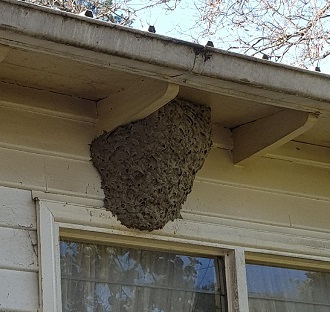
 Most honey bees (Apis mellifera) are shy insects and avoid conflict. They also nest in shady, out of the way places. You are most likely to meet them at a honey farm. Nevertheless, people living on the outskirts of Melbourne, near areas of wilderness or agriculture, may meet them more frequently (since they need a lot of flowers for honey and pollen).If you visit a garden, do care to check under picnic tables (from a safe distance). The species Apis dorsata is known to nest in high-up places, such as in high-rises.A colony of these insects is easy to spot: it is perpetually noisy with the buzz of hundreds of individuals. If you see it, you will notice something like a ball of buzzers, crawling over each other. The best course is to move away. An empty nest will be made of one or more hives, full of hexagonal ‘combs’. In a live colony, these will usually be occupied by eggs, larvae or pupae, or used to store honey and pollen.If you have
Most honey bees (Apis mellifera) are shy insects and avoid conflict. They also nest in shady, out of the way places. You are most likely to meet them at a honey farm. Nevertheless, people living on the outskirts of Melbourne, near areas of wilderness or agriculture, may meet them more frequently (since they need a lot of flowers for honey and pollen).If you visit a garden, do care to check under picnic tables (from a safe distance). The species Apis dorsata is known to nest in high-up places, such as in high-rises.A colony of these insects is easy to spot: it is perpetually noisy with the buzz of hundreds of individuals. If you see it, you will notice something like a ball of buzzers, crawling over each other. The best course is to move away. An empty nest will be made of one or more hives, full of hexagonal ‘combs’. In a live colony, these will usually be occupied by eggs, larvae or pupae, or used to store honey and pollen.If you have 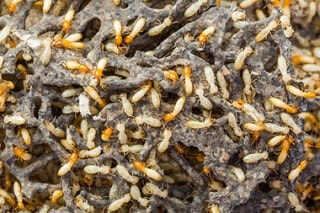 Most termites (order Isoptera) are harmless, forest-dwelling insects, where they erect towering termite mounds. But dry wood termites have adapted to human habitation, and since we use their food source – wood – in abundance, termites have come be one of the most economically destructive pests in Melbourne. You can’t spot a termite nest since they burrow deep inside wood, but if you tap a wooden wall or floorboard and hear a hollow sound, it’s likely there’s a colony inside, eating the wood away.
Most termites (order Isoptera) are harmless, forest-dwelling insects, where they erect towering termite mounds. But dry wood termites have adapted to human habitation, and since we use their food source – wood – in abundance, termites have come be one of the most economically destructive pests in Melbourne. You can’t spot a termite nest since they burrow deep inside wood, but if you tap a wooden wall or floorboard and hear a hollow sound, it’s likely there’s a colony inside, eating the wood away.